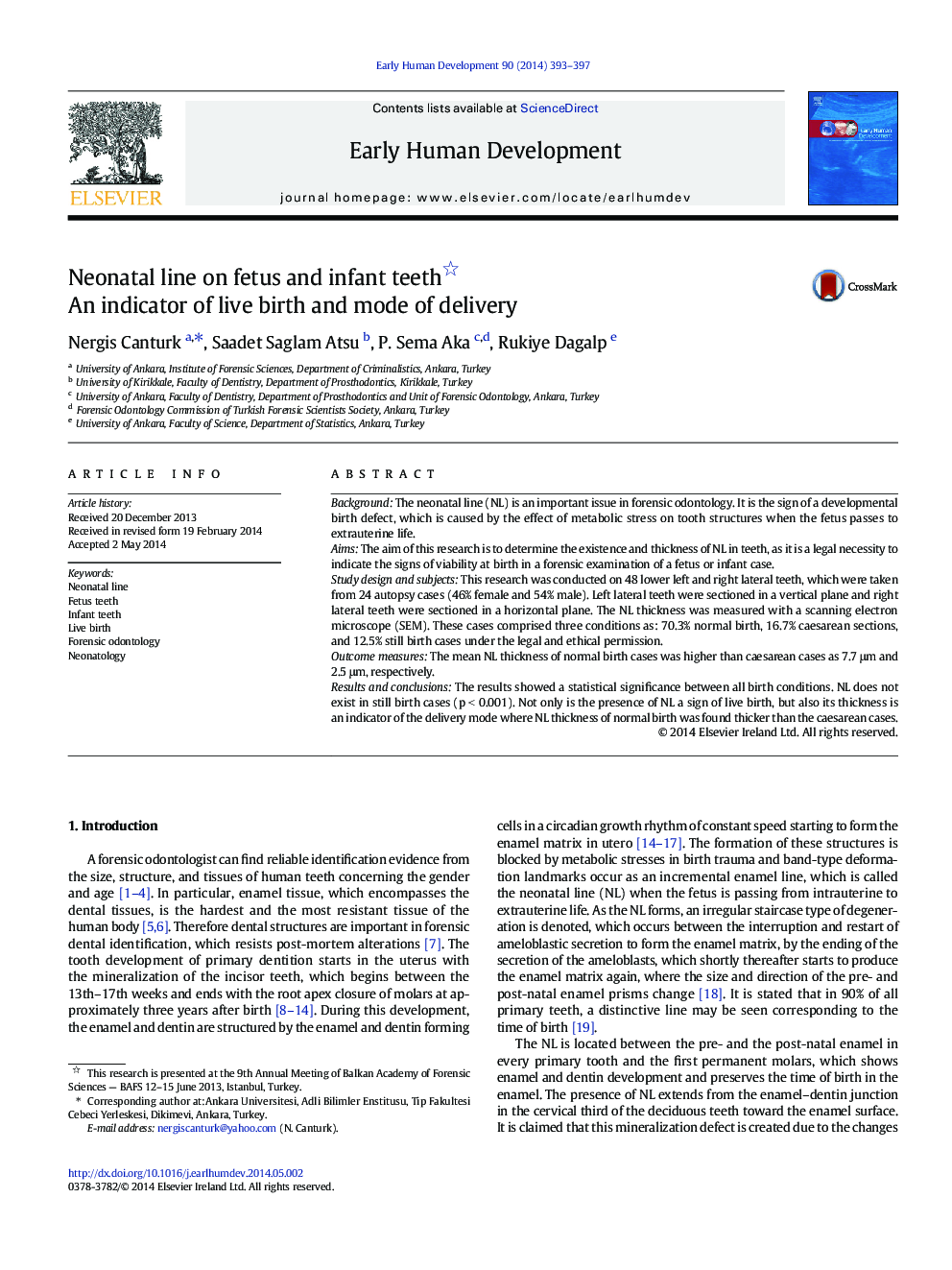| Article ID | Journal | Published Year | Pages | File Type |
|---|---|---|---|---|
| 3916526 | Early Human Development | 2014 | 5 Pages |
BackgroundThe neonatal line (NL) is an important issue in forensic odontology. It is the sign of a developmental birth defect, which is caused by the effect of metabolic stress on tooth structures when the fetus passes to extrauterine life.AimsThe aim of this research is to determine the existence and thickness of NL in teeth, as it is a legal necessity to indicate the signs of viability at birth in a forensic examination of a fetus or infant case.Study design and subjectsThis research was conducted on 48 lower left and right lateral teeth, which were taken from 24 autopsy cases (46% female and 54% male). Left lateral teeth were sectioned in a vertical plane and right lateral teeth were sectioned in a horizontal plane. The NL thickness was measured with a scanning electron microscope (SEM). These cases comprised three conditions as: 70.3% normal birth, 16.7% caesarean sections, and 12.5% still birth cases under the legal and ethical permission.Outcome measuresThe mean NL thickness of normal birth cases was higher than caesarean cases as 7.7 μm and 2.5 μm, respectively.Results and conclusionsThe results showed a statistical significance between all birth conditions. NL does not exist in still birth cases (p < 0.001). Not only is the presence of NL a sign of live birth, but also its thickness is an indicator of the delivery mode where NL thickness of normal birth was found thicker than the caesarean cases.
